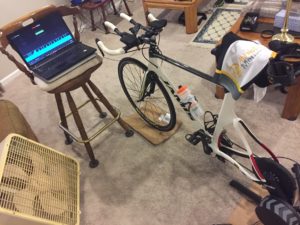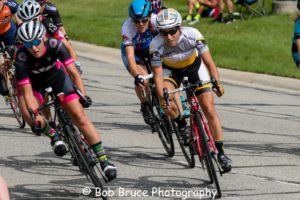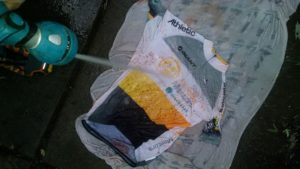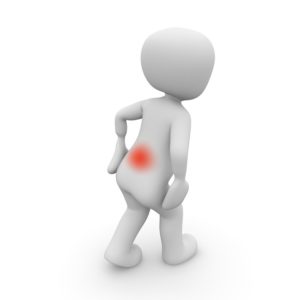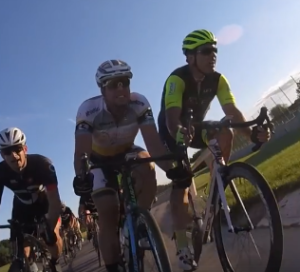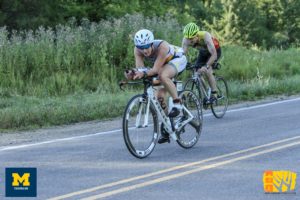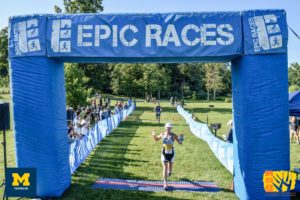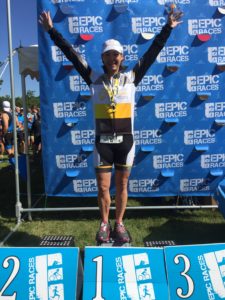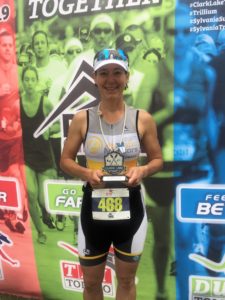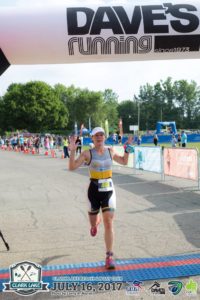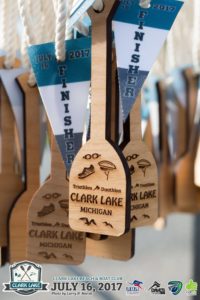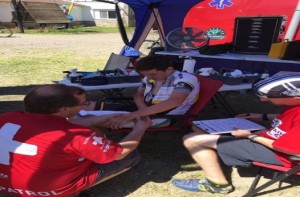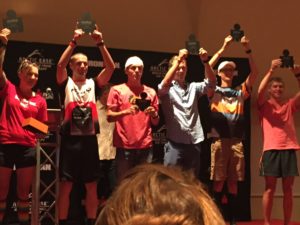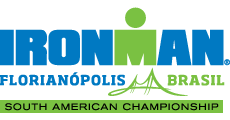–By Terry Ritter
September 9th saw big time bicycle racing return to the Detroit area. The Detroit Athletic Club put on the inaugural Detroit Cycling Championship. This event had a large purse ($45K!), and drew both amateur and pro teams from around the Midwest region and our friends to the east, Canada.
The course was interesting as well, though rather challenging. Three of the main roads used ran the perimeter of Comerica Park, where the Tigers play Major League baseball. Between corners #2 and #3 was a pretty good downhill that generated speeds in excess of 30 mph. From here there was a short section between turns #4 and #5, then #5 and #6, and back onto the long, slight uphill straight. And, being inner streets of a major city, the patched pavement and utility covers were plentiful, with the worst examples of the former on the course’s fast decent. Add a quality prize list and the accomplished riders that show for such a draw, and you’ve got a technical race that was fast and strung out from the gun. Having frequent primes only ramped things up more. Moving up and maintaining position was a challenge, especially since the opportunity to transit through the field of riders was muted by the speed, and dive-bombing corners was a common occurrence.
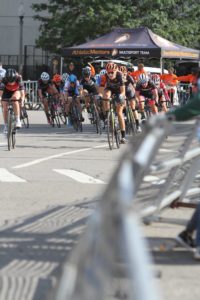 The ample purse meant a lot of new riders, and opportunities to have different race classes combined compared to the normal Michigan scene. This meant not only grouped category 3s and 4s races, but category 2s and 3s as well. There was also a full masters class. Ultimately, this left the racers on Team Athletic Mentors the opportunity to not only get a couple of events in, but to race with each other when we normally don’t get that chance.
The ample purse meant a lot of new riders, and opportunities to have different race classes combined compared to the normal Michigan scene. This meant not only grouped category 3s and 4s races, but category 2s and 3s as well. There was also a full masters class. Ultimately, this left the racers on Team Athletic Mentors the opportunity to not only get a couple of events in, but to race with each other when we normally don’t get that chance.
Toeing the line in the combined Cat. 2/3 race was Terry Ritter, Rich Landgraff, Luke Cavender, Collin Snyder, Ross Williams, and Bobby Munro. Like all the races, this one was fast. Collin won a prime early on, then took a flyer to try to get away with three laps to go. However, there was too much horsepower for anything but a sprint finish.
Ross and Bobby were active in their Cat. 3 only race, with Ross attacking for a prime and then Bobby 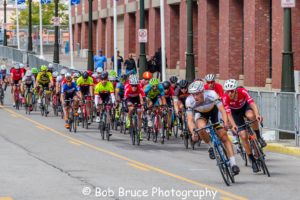 countering the next lap to try to get away. Great to see some tactical racing from our up-and-coming racers.
countering the next lap to try to get away. Great to see some tactical racing from our up-and-coming racers.
The Masters race was all three categories (35+, 45+, 55+), and it made for a large field but interesting dynamic. It wasn’t slow by any means (the 35+ group assured that), and there was a national champion kit in the mix as well. Richard, Peter O’Brien, and Terry doubled up (Peter was in the Cat. 3 Masters race earlier), with Jonathan Morgan joining the crew.
Elaine was our sole female Team Athletic Mentor rider and competed in the Cat. 3/4 race, as well as the Cat. P/1/2/3 race. Like the other races, the group was rarely grouped together, and the later race was especially fast. There were a few teams that were recognizable from the National Criterium Championship race earlier in the summer. With this being Elaine’s first year of serious road racing (not to mention criteriums), she did very well and represented the team impressively.
The final event of the day was the Pro/1/2, slated for 80 mins. A lot of big regional teams were there and it was super fast. Dan Yankus, Collin, Peter Ehmann and Jonathan started. Many riders didn’t finish due to the pace. Eventually, a group of 5 got away, including two Bissell Pro riders, that lapped the field. Then, with about 10 laps to go, there was a crash that left a few riders in need of medical attention and the race was halted, only to restart after the break with a fast conclusion. With a $200 prime on the second to last lap, the pace was high…until the group passed the first corner as the last lap bell was ringing. Bissell slowed a bit around corner #2, with Daniel taking advantage and shooting up near the front on the outside. Unfortunately, a number of riders dive bombed the inside corner, pushing Daniel and the Bissell train towards the outside and into the barriers, causing a crash. Fortunately, no one was hurt too badly and the race finished on that lap. Collin came home with 30th on the evening.
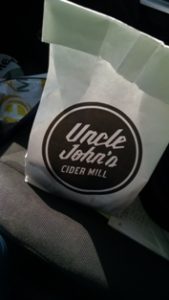 Not getting enough racing for the weekend, Bobby, Daniel, Collin, Terry and Ross headed to Uncle John’s 56 mile gravel race north of Lansing on Sunday. Glen Dik joined the mix. The team was active early, with Daniel finishing fourth out of the small break that got away from the rest of the field. Collin got 6th overall and Terry came in 13th, and 3rd in the 47-51 age group. Elaine and JoAnn Cranson competed in the women’s 24 mile race as well.
Not getting enough racing for the weekend, Bobby, Daniel, Collin, Terry and Ross headed to Uncle John’s 56 mile gravel race north of Lansing on Sunday. Glen Dik joined the mix. The team was active early, with Daniel finishing fourth out of the small break that got away from the rest of the field. Collin got 6th overall and Terry came in 13th, and 3rd in the 47-51 age group. Elaine and JoAnn Cranson competed in the women’s 24 mile race as well.
There are rumors that next season the Detroit Criterium Championship will be earlier in the season and hopefully on the national cycling calendar. With the positive support and great organization of this year’s inaugural event, there’s little doubt this can grow bigger and better, showcasing the renewal of our great city.
The post Detroit Cycling Championship Team Recap appeared first on Team Athletic Mentors.




 Our Hockey Site
Our Hockey Site Team AM
Team AM


